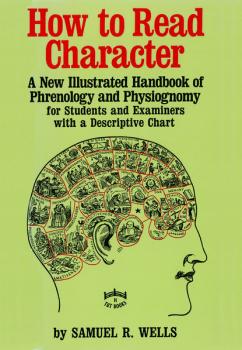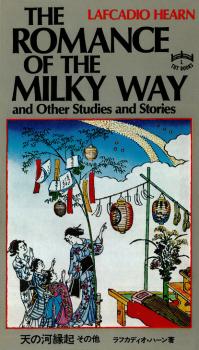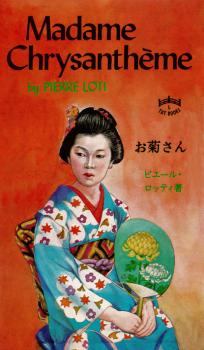MREADZ.COM - много разных книг на любой вкус
Скачивание или чтение онлайн электронных книг.How to Read Character
Phrenology, the practice of studying character and mental capacity from the confirmation of the skull, has always been a fascinating subject. As Pope said: «The proper study of mankind is man.»Here is a book with a lot of character–in fact, many characters, some famous and others infamous, from misers and murderers to presidents, philosophers and plenipotentiaries. These many and varied personalities are presented as illustrations of character traits. An example of Mirthfulness is Artemus Ward, the noted American humorist of a century ago. The contrast between his head and that of Kanosh an Indian chief, is striking if not exactly hair-raising. Sublimity is represented by William C. Bryant, the famous American poet and author of «Thanatopsis.» The «organ» of Sublimity is situated on the side-head, directly above acquisitiveness and behind Ideality. "The function of Sublimity, "The book tells us, «is to give perception of grand and sublime in nature, art, and literature–to appreciate lofty mountains, the vastness of the ocean, the grandeur of a thunderstorm, the roar of artillery, the clash of armies…It is also an element in religious faith, and assist our conceptions of God and immortality.»
Japanese Theatre
Japanese Theatre presents a full historical account for Westerners of the theater arts that have flourished for centuries in Japan.Kabuki, arising in the late seventeenth century, is the theater of the commoner. The successive syllables of Kabuki mean «song – dance – skill.» The precursors of Kabuki were the puppet theater and the comic interludes in the stately, aristocratic Noh drama – all fully described by the author. In the modem era the Japanese have broken away from Kabuki, and their stage has shown a realistic trend. Left–wing theater groups arose in the 1920’s, were suppressed by the militarists, and then revived during the occupation.Appended to the historical chapters are Mr. Bowers's translations of three Kabuki plays: The Monstrous Spider, Gappo and His Daughter Tsuji, and the bombastic Sukeroku.This book, with its many excellent photographs, is a permanent addition to the West's knowledge of the exotic, exciting theater of Japan and its tradition of great acting.
Plant Life of the Pacific World
This Asian ecology book offers an overview of the plant life of the vast Pacific region.Among the topics covered are the tropical forest and jungles, the grasslands, the primary and secondary forest, and the plants of the seashores. Weeds and cultivated plants are also discussed with overviews of plant distribution and notes on specific islands and island groups.Plant Life of the Pacific World will fill a great need as an important reference source not only for the ethnobotanist but for the professional botanist and the student interested in the flora of the Pacific basin. The information it contains—adequately detailed and clearly presented—should also open the eyes of both visitors and inhabitants to the natural riches of the Pacific region.
Diplomat in Japan
A fascinating inside account of the epic clash between the Japanese in the West in its earliest days.Sir Ernest Satow entered the British diplomatic service in 1861, a fresh graduate of London University, shortly arriving in Yokohama as the pressure of the Western powers heightened to force Japan from her self-imposed seclusion. This illustrated work, written between 1885 and 1921, offers his intriguing firsthand account of the critical years which led to the final overthrow of the Shogunate, the restoration of direct rule to the ancient line of emperors and, indeed, to the birth of modern Japan. It was a period of momentous importance for Japan, and of crucial significance in global history.Based on diary notes kept without interruption during twenty years of service in Japan, Satow reconstructs the strange and occasionally hazardous world confronting foreigners in those early days. Combining astute personal insight with a direct knowledge of the details of treaties and the circumstances of their negotiation, he provides a unique and authentic inner history of the events which finally brought Japan onto the international scene.
Romance of the Milky Way
This delightful book presents seven pieces from the rich heritage of Lafcadio Hearn—one of the first and most preeminent scholars to travel to and write about Japan. They are a natural outgrowth of Hearn's peerless philosophy: «If you have any feeling—no matter what—strongly latent in the mind (even only a haunting sadness or a mysterious joy), you may be sure that it is expressible.»Hearn's language, his incomparable prose, ripened and mellowed consistently to the end, enabling him to write rich, melancholy, and profound passages such as the final paragraph in The Romance of the Milky Way: «I see the thrill of its shining stream, and the mists that hover along its verge, and the water-grasses that bend in the winds of Autumn. White Orihime I see at her starry loom, and the ox that graces on the farther shore, and I know that the falling dew is the spray from the herdsman's oar. And the heaven seems very near and warm and human; and the silence about me is filled with the dream of a love unchanging, immortal, fever yearning and forever young, and forever left unsatisfied by the paternal wisdom of the Gods.»
Introduction to Japanese Culture
Featuring full-color photographs and illustrations throughout, this text is a comprehensive guide to Japanese culture. The richness of Japan's history is renowned worldwide. The heritage of culture that its society has produced and passed on to future generations is one of Japan's greatest accomplishments. In Introduction to Japanese Culture , you'll read an overview, through sixty-eight original and informative essays, of Japan's most notable cultural achievements, including:Religion, Zen Buddhism, arranged marriages and BushidoDrama and Art—from pottery, painting and calligraphy to haiku, kabuki and karateCuisine—everything from rice to raw fishHome and Recreation, from board games such as Go to origami, kimonos and Japanese gardensThe Japan of today is a fully modern, Westernized society in nearly every regard. Even so, the elements of an earlier age are clearly visible in the country's arts, festivals, and customs. This book focuses on the essential constants that remain in present-day Japan and their counterparts in Western culture.Edited by Daniel Sosnoski, an American writer who has lived in Japan since 1985, these well-researched articles, color photographs, and line illustrations provide a compact guide to aspects of Japan that often puzzle the outside observer. Introduction to Japanese Culture is wonderfully informative, a needed primer on the cultural make-up and behaviors of the Japanese. This book is certain to fascinate the student, tourist, or anyone who seeks to know and understand Japanese culture, Japanese etiquette, and the history of Japan.
Intellectual Life
This classic exploration of the intellectual life has fully retained its unique value since initial publication in 1904, and is a valuable addition to any discerning reader's collection.No subsequent work fully compares to this rare mixture of personal insight, ethics, taste, psychology, and common sense. Philip Gilbert Hamerton bestowed upon it his long experience as a writer and artist, his enviable breadth of knowledge, and his elegance of literary style. The result is a remarkable work, expressing intimately the mind and personality of the author, yet universal in its application to all those with a love of intellectual pursuits. The publisher takes a great deal of pleasure in offering this work to the public.The author consistently rejects simple, dogmatic views, encouraging balance and moderation. He writes, «We need society, and we need solitude also, as we need summer and winter, exercise and rest.» There is criticism of both aristocracy and democracy: culture leads one away from class concerns, but one must equally beware the democrat's intolerant tendency to degrade all to the least common denominator.The book is organized as a series of letters addressed to individuals in a variety of situations. This permits a balanced and insightful work.
Chess Variations
Learn the many varieties of chess the world over with this concise chess guide.Chess Variations is a must for all chess enthusiasts and an outstanding book which promises many hours of pleasurable entertainment for all others. With more than 40 variations of the popular board game, this book contains, among others, the oldest known form of chess (Chaturanga), the game created by Edgar Rice Burroughs and introduced in his Martian series (Jetan), as well as regional forms currently played in Korea, Malaya, Burma, Thailand, and Japan.For those games that require boards or pieces other than those issued in playing modern chess, the author presents guidelines on «The Construction of Sets.» Also included in the book are charts, diagrams, and sample games played by the author and his friends.The excitement of playing these exotic chess variations increases with the knowledge of their historic beginnings as well as with the movements of such strange-sounding pieces as the Zarafah, Ashwa, and Firzan.
Madame Chrysantheme
Pierre Loti's Madame Chrysantheme is a charming story, a real life tale of love between the Frenchman Pierre Loti and a geisha. At times the story is happy, at other times it is sad. The setting is a summer in Nagasaki almost a century ago. Loti, as a young naval officer on station in harbor, had sufficient time on his hands to establish a home ashore with fragile and beautiful Madame Chrysantheme. In these days of fast jet travel such romances are scarcely possible for travelers, yet the appeal of them remains.Here is a novel based on a real experience written by one of France's greatest masters of description. The theme is love in the exotic Japan of the late nineteenth century. At times the scenario resembles comic opera in the vein of Gilbert and Sullivan's Mikado, but at other times emotional feeling runs as deep as in Puccini’s Madame Butterfly. The mixed denizens of the Nagasaki waterfront and the teahouses of those long-ago days provided Loti with very rich material indeed. This is a book all lovers of the romantic side of traditional Japan will be sure to appreciate.
Art, Life & Nature in Japan
The artistic and philosophical heritage of Japan has a special meaning for the modern world. During the present century, Japanese thought and Japanese art have exerted a strong influence on the western mind. Art, Life, and Nature in Japan takes us to the roots of Japanese culture and the origins of this influence.In this brief but deeply meaningful book Masaharu Anesaki provides a panoramic view of Japanese culture, with particular emphasis on the spirit of Japanese art. The book has, in fact, established itself as a classic, and it ranks with such other valuable works of its time as The Book of Tea, in which Kakuzo Okakura deals with a similar theme.Anesaki expresses himself in crystal-clear English to convey a message that is significant today as it was before World War II, when his book first appeared. He advocates peace and a turning inward to the beauty of art and nature. He is as familiar with the Zen philosophy of the samurai and the tea master as with sentiments of ancient court noblemen and the quiet thought of a humble peasant.









